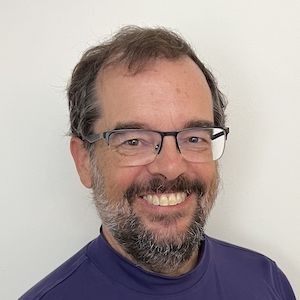Friendly advice for your history panel presentation
As another round of academic conferences approaches on my spring calendar, I’m updating my friendly advice for panelists who invited me to serve as their commentator at the upcoming meeting of the Organization of American Historians (OAH).
Dear panelists,
Looking forward to serving as commentator on your upcoming panel at the OAH. I make a practice of sharing some friendly advice as you prepare your conference presentations, with the goal of making the process more transparent and educational. I also encourage others to share their advice, which may differ from my own.
1) Believe it or not, the OAH officially requested you to send your papers a week ago on Feb 15th. Ignore that deadline. Instead, please send your papers no later than Wednesday, March 27th, which is one week before our panel. Note that this extension is a hard deadline, and panelists who miss it will not receive any prepared feedback from me.
2) Please send your writing to the entire panel by the date above. The goal of a conference is to share work-in-progress, learn from others, promote discussion, and spark ideas. Help make this happen by pressing the “reply all” button.
3) When you send out your writing, please include a 2-sentence bio and more importantly, a short description of the context and trajectory of this specific piece of writing. For example, do you envision this writing as part of a dissertation chapter, and/or journal article, and/or book? Is it a new project or one near completion? Since I view conferences to be similar to a “writing workshop,” where we help authors take their work to the next level, knowing more about the direction you’re intending to go helps all of us to offer better advice on how to get there.
4) Everyone has their own presentation style. But I strongly support this OAH conference statement: “We strongly encourage presenters to deliver ideas and arguments without reading from papers…” Rather than reading a paper verbatim, prepare a talk that connects with your audience. What’s the larger question that motivates your research? How do you answer that question through your interpretation of relevant sources? What new insights does your work offer us on this topic or time period? And why does it matter? If you can wrap all of this together in a compelling story, that’s what makes historical narrative stand out from the social sciences.
Sometimes we work pieces of writing that are longer than what one can deliver during a conference panel, such as a dissertation chapter or journal article. In that case, I encourage authors to send us the longer work (such as a 30-page draft), with a note explaining how your presentation will focus only on certain sections (such as pages 1-3 and 10-14). Doing so will help me avoid the awkward situation of commenting about a portion of your longer essay that audiences have not heard. At the other end of the spectrum, it’s also acceptable to send us a relatively short “conference paper” that outlines the larger questions, arguments, evidence, and deeper meaning that you plan to present.
5) Aim to deliver your talk in less than the allotted time. Everyone loves a concise and focused presentation. And everyone feels embarrassed when a speaker who runs over needs to be interrupted by the chair, so let’s work together to prevent this from happening. I’m a friendly but firm timekeeper. Begin with our OAH session length of 90 minutes, then subtract 10 minutes for my comments, and subtract another 25 minutes for discussion with the audience, as the OAH recommends. That leaves 55 minutes for 4 papers, or about 13 minutes each. Aim for 10-12 minutes.
6) No one requires you to present slides during your talk. Nor do slides alone make a good talk (as we’ve all experienced dreadful talks with slides, and wonderful talks without slides). The decision is entirely up to each individual, and circumstances will vary. But in general, I encourage presenters to consider adding a visual element to enhance the delivery of your talk, and to give audiences a better glimpse of your historical work. Some presenters show slides that encapsulate key arguments, or even just key words, while they talk. Others present images of their source materials to accompany their ideas. Some presenters accomplish this with paper handouts. Overall, it’s usually better to give audiences something to look at during your talk, to help us stay focused on the content (rather than a bead of sweat running down your forehead).
If you plan to show slides, please coordinate your technology setup in advance with other presenters. The OAH provides a projector in each room, but requires users to bring their own laptops and adapters. Everyone wins if the presenters decide to share one laptop, with all of the slides loaded ahead of time, to avoid losing time swapping out hardware.
Furthermore, if you present digital slides, consider hosting them on the public web, and inserting a short link (or Twitter handle) on the first slide, to guide audience members (or people who could not attend your session in person) on how to download your slides to learn more about your research. Years ago, I presented PowerPoint slides that resided only on my laptop. Then I began using the free http://bit.ly shortlink service to point audiences to PowerPoint slides located in my public Dropbox. Then I shifted from PowerPoint slides to Google Slides on the public web, with a shortlink on the first slide and also in my Twitter feed, to share my work more widely. Figure out what works best for you.
Unless your group tells me otherwise, I’ll presume that our session will proceed in the order listed in the program.
Looking forward to learning more about your work. Let me and others know if you have any questions before we meet up in person.
Jack
